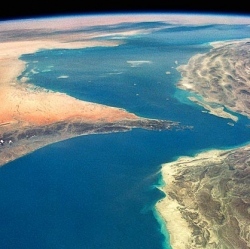
A metallic ring big enough for astronauts and cargo to fit through is scheduled to fly to the International Space Station in July as part of the cargo aboard a Dragon cargo spacecraft loaded with materials for the orbiting laboratory and its crew. The ring is to provide a port for spacecraft bringing astronauts to the station in the future.
The Dragon and its cargo will fly into orbit aboard a SpaceX Falcon 9 rocket that will take about 10 minutes to lift the spacecraft from its launch pad at Cape Canaveral Air Force Station in Florida to an orbit to catch up with the station. It will take about two days for the Dragon to reach the station. Once within reach of the station’s robotic arm, the Dragon will be berthed to the orbital complex by the astronauts already on the station.
Outfitted with a host of sensors and systems, the adapter is built so spacecraft systems can automatically perform all the steps of rendezvous and dock with the station without input from the astronauts. Manual backup systems will be in place on the spacecraft to allow the crew to take over steering duties, if needed.
"It’s a passive system which means it doesn’t take any action by the crew to allow docking to happen and I think that’s really the key," said David Clemen Boeing’s director of Development/Modifications for the space station.
The IDA stands about 42 inches tall and is 63 inches in diameter on the inside. Sensors and other fittings ring the perimeter of the adapter and give it an overall diameter of about 94 inches. Spacecraft flying to the station will use the sensors on the IDA to track to and help the spacecraft’s navigation system steer the spacecraft to a safe docking without astronaut involvement.
The adapter also represents the first on-orbit element built to the docking measurements that are standardized for all the spacecraft builders across the world. Its first users are expected to be the Boeing Starliner and SpaceX Crew Dragon spacecraft now in development in partnership with NASA’s Commercial Crew Program. Because the adapter is designed to an international standard, future spacecraft will be able to dock there, too.
"It’s really good we have an international standard now that anybody can build against and come dock to the station or to anything that has the same standard," Clemen said.
